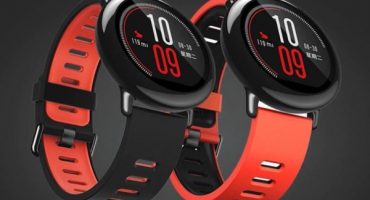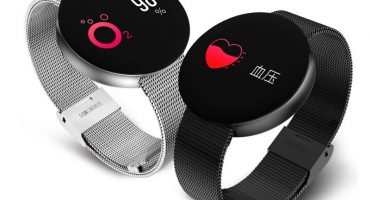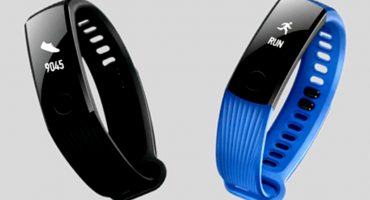In the modern world there are not many people who do not monitor their health. It can be athletes, the elderly or those who want to lose weight. And the first parameter to control is heart rate. The pulse rate helps to understand the state of the heart muscle, and whether it is worth starting an exercise, or if you need to relax in a calm environment.
The easiest way to control your heart rate is with a heart rate monitor. This article discusses in detail such a type of heart rate sensor as a chest heart rate monitor, and compiled the top 5 most effective and popular models.
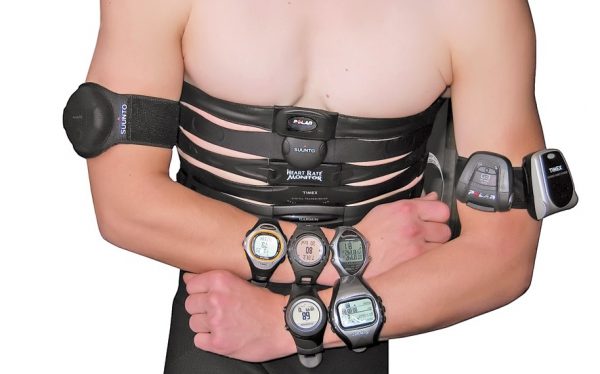
Types of heart rate monitors
How is the heart rate monitor
The first heart rate monitors began to be released back in the mid-80s. They worked on the principle of an ECG apparatus: electronic heartbeat signals are read by the sensor, and from it are transmitted to the display in the form of indicators. This technology is quite reliable and relevant until now.
More modern devices are equipped with an optical plezmograph. His work is based on an optical sensor, which is located on the back of the bracelet and emits light on the wrist. This light is absorbed by the blood in the vessels, and a special sensor detects a change in its density and pulsation. This method is considered more reliable under normal conditions, but less effective in cold weather and with a heart rate of more than 160 beats per minute, when the sensor does not have time to fix the blood density.
The latest innovation in heart rate control is the mechanical measurement using a piezoelectric pressure sensor. This principle has not yet gained popularity, and is implemented in only one bracelet from HealBe.
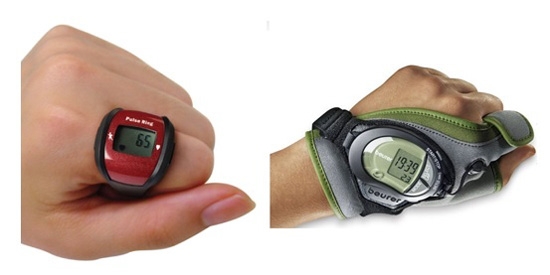
Heart rate monitor
What are heart rate monitors
The entire large assortment of heart rate monitors can be divided into two types:
- with external sensor;
- with integrated sensor.
The first group includes gadgets with a built-in heart rate monitor. Their indicator is considered more reliable, but until recently, such devices were too bulky, and were not used during training. Recently, compact bracelets with a heart rate monitor, called “fitness trackers”, have become very popular.
The second type of heart rate monitor receives information about heart rate and transmits it to a paired device (smartphone, PC, remote display, fitness bracelet) using a Bluetooth transmitter. The external sensor has several disadvantages:
- during group training, the signals can be mixed and fed to different devices;
- heart rate data arrives late, so you can not accurately control the dynamics of heart rate in real time;
- close to power lines, the sensor signal may “fail” or transmit inaccurate information.
In modern devices, there is a more advanced method of data transmission ANT +, winning in reliability and efficiency.
Gadgets with an external sensor have many mounting options:
- On the finger. It looks like a clothespin or a big ring. Not suitable for continuous use, more suitable for measuring heart rate at home.
- Headphones. Designed specifically for running or active sports. Allow you to simultaneously listen to music and receive health data. A little common due to a strong measurement error.
- On the earlobe. A small device that does not interfere with training. It has several constructional disadvantages: it does not work well in the cold, sometimes it squeezes the ear, falls off from active movements.
- With a chest strap. The most popular and most accurate way to measure heart rate.The sensor is attached to the chest with an adjustable tape that holds firmly on the body even when running fast or jumping. Modern mounts are equipped with silicone impregnation, which completely eliminates the falling of the heart rate monitor even in water.

Heart rate monitor with chest strap
Who should use a chest heart rate monitor
The price of a chest heart rate monitor often significantly exceeds the cost of other models. The reason for this is increased accuracy, reliability of fastening and a narrow sports orientation. Therefore, before choosing the best device, you should decide what it will be used for, and what features it really needs, and which ones you can save on.
Chest heart rate monitor is suitable:
- novice athletes to control increased loads, and to avoid overtraining;
- experienced athletes to observe and compare the stages of training with previous indicators;
- weight loss through active exercises (fitness, aerobics, running, dancing) to reduce the risk of overstrain and additional motivation.
Important! A chest heart rate monitor can be combined with any sport, including swimming (waterproof models), cycling and winter training.
This type of heart rate monitor is not suitable for the elderly or people with heart disease, due to the high cost and inconvenient process of attachment / removal. In these cases, it is more convenient to use a wrist heart rate monitor.
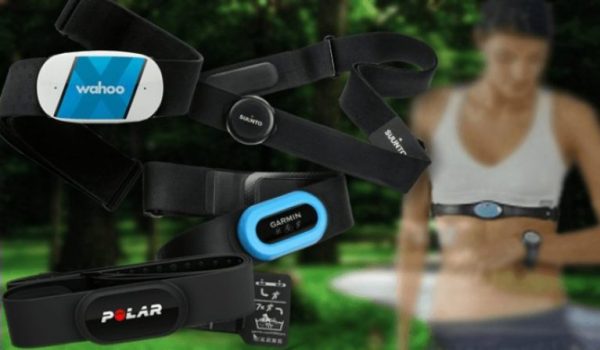
Wrist Heart Rate Monitor
Additional functions of chest heart rate monitors
In addition to the heart rate measurement function, modern devices boast a number of useful features:
- display of time, alarm, stopwatch;
- calculation of distance traveled and speed;
- maximum, minimum and average heart rate limits for the selected period;
- counting calories burned;
- recovery mode. The ability to detect the time during which the pulse returns to normal after a workout;
- GPS module that allows you to synchronize the route with the map;
- training history;
- synchronization with a smartphone, tonometer, bicycle sensor or PC.
Top 5 chest heart rate monitors
Nexx HRM-02
This model can not be attributed to professional devices, it is more suitable for beginners. The functionality here is minimal: the heart rate chart and the route traveled. But all this pays off at an extremely low cost and proven reliability.
The gadget is compatible with the most popular fitness apps: RunKeeper, WahooFitness, Runtastic, which support both iOs and Android. Information is transmitted to the smartphone via Bluetooth, and the batteries, according to the seller’s website, last for 4-6 months. Protection against moisture is not provided in the device, therefore care should be taken in advance to protect the device in rainy weather.

Nexx HRM-02
Advantages:
- Low price.
- Support for popular applications.
- Frequent recharging is not required.
Disadvantages:
- Little functionality.
- Lack of own application.
- Lack of moisture protection.
Price - 2300 p.
Suunto smart belt
The smallest and most powerful heart rate transmitter presented in the review goes well with a Suunto watch. The device does not have its own memory, but can transmit information both to a smartphone (in the Movescount application), and to any watches and bracelets of this company.
In addition to the standard functions of a heart rate monitor and the possibility of using it underwater, a small device can keep and analyze a training journal, displaying tips for more efficient work.

Suunto smart belt
Advantages:
- Compactness.
- Compatible with Suunto Fitness Watch.
- Native application.
- Moisture protection.
Disadvantages:
- Intuitively incomprehensible application.
- Lack of retention impregnation on the back of the strap.
Price - 5600 rub.
Garmin HRM-Tri
This heart rate monitor has become the most versatile among the entire Garmin line. It can equally well control the athlete’s heart rate on a bicycle, in the water and on a treadmill.
The model compares favorably with several features: the ability to store information directly on the sensor for up to 20 hours, record the time of activity, take into account the frequency of steps, and the time of contact with the ground.
The Garmin online community allows you to lay out a workout plan, share your results, compare achievements and chat with friends.
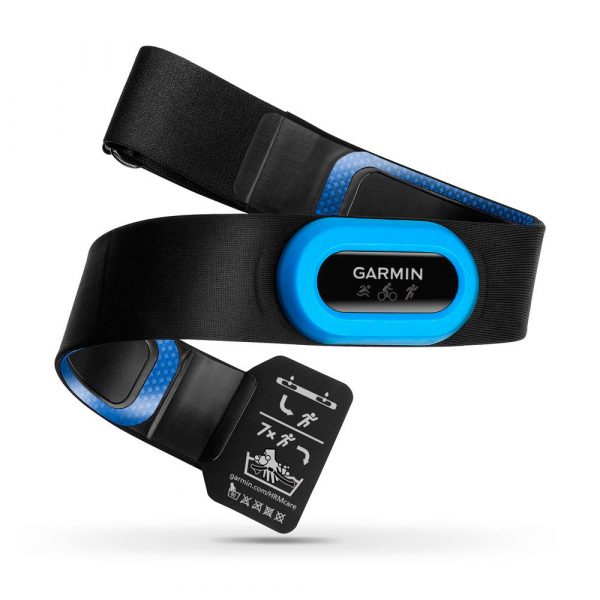
Garmin HRM-Tri
Advantages:
- Moisture resistance.
- Built-in training plan.
- Compatible with Garmin watches.
- Strong case.
Disadvantages:
- High price.
- The ability to pair only through ANT + (no Bluetooth).
- Short battery life (250 hours).
Price - 9800 rub.
Polar H10
The main feature of the new heart rate monitor was the availability of its own memory and the ability to record and store training information. This eliminates the need for the owner to take a smartphone with him, which is very convenient for running.
The heart rate transmitter can be synchronized not only with mobile devices, but also with all Polar equipment, including fitness trackers, bicycle sensors and sports equipment. This allows you to expand the original functionality of the gadget to the capabilities of a full-fledged sports computer.
To the list of pluses, you can add that the sensor tape is equipped with silicone dots that securely hold the heart rate monitor on the chest.
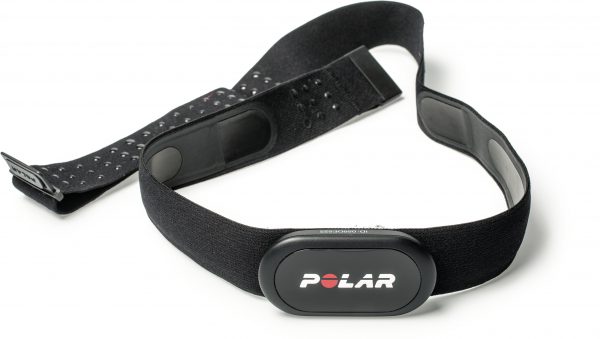
Polar H10
Advantages:
- Built-in memory.
- Ability to connect to other Polar devices.
- Moisture resistance.
- High accuracy of indications.
Disadvantages:
- High price.
- Small functionality (without pairing with other devices).
- Short battery life (300 hours).
Price - 7000 p.
Wahoo Fitness TickrX
The first thing that surprises Wahoo is its impressive battery life - up to 1 year. And the second is the diverse functionality that the developers tried to pack into a small device. The sensor on the tape not only records the pulse, but also records the distance traveled, speed and calories burned, transmitting information to the smartphone. The application also has useful functionality for cyclists and fans of interval training. A variety of features and relatively low cost make TickrX the best representative in its segment.
Data transfer is carried out both via Bluetooth, and using ANT + on an Android or iOS device. In addition, this device is protected not only from rain, but also from immersion in water by 1.5 meters, which allows you to use it in the pool.
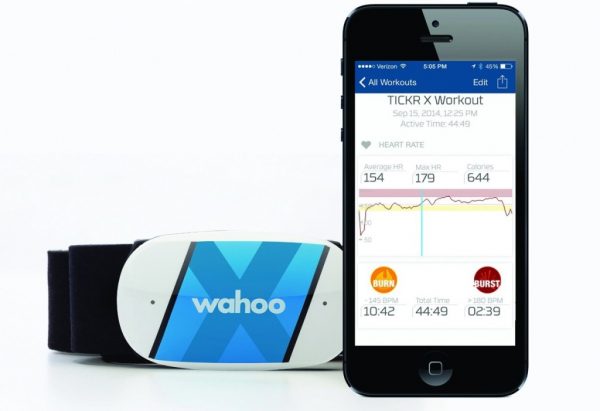
Wahoo Fitness TickrX
Advantages:
- Long time work.
- Native Wahoo Fitness app.
- Rich functionality.
- Built-in training system.
- Moisture protection.
Disadvantages:
- No internal memory (requires constant pairing with the device).
- No retention impregnation on the strap.
Price - 4200 p.

